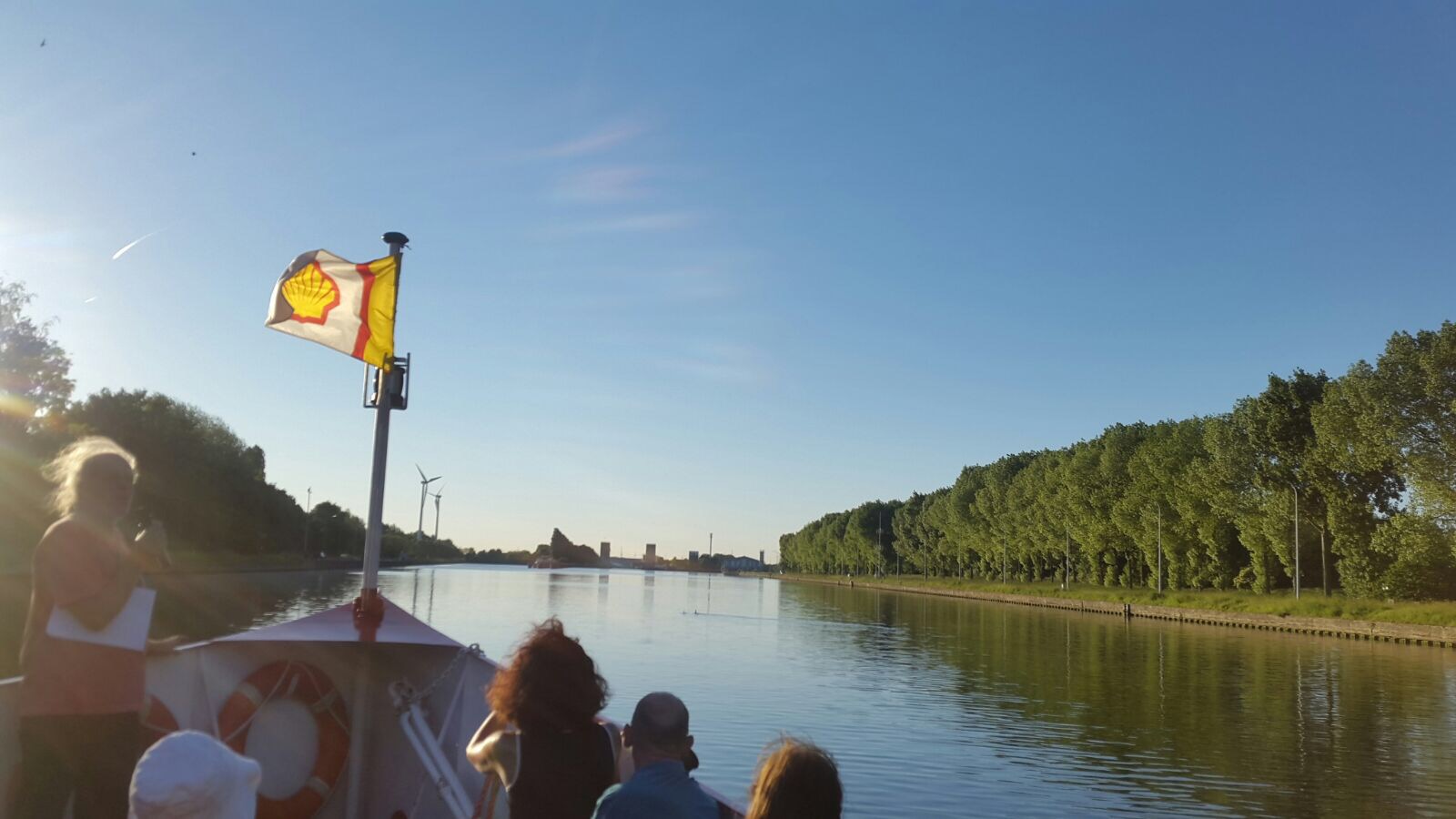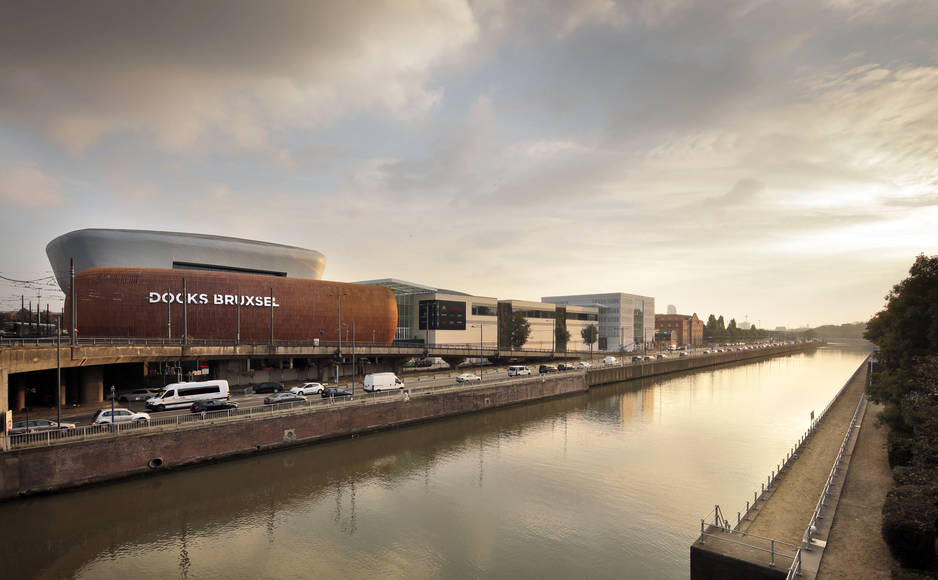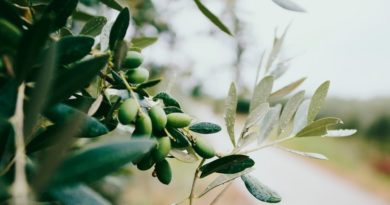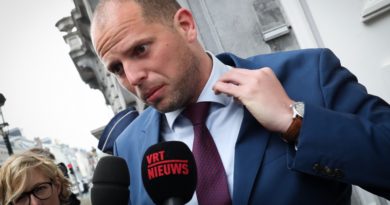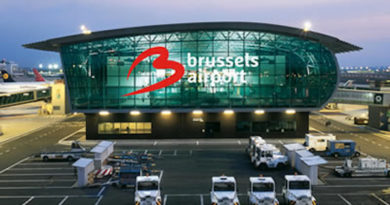Exploring Brussels by boat
The water in the canal lies peaceful, a mix of warm tones and colors at dusk, the mirrored image of old buildings being reflected at an angle, the stillness of a clear sky painted on the liquid surface. Underneath, the engine murmurs, makes the floor under our feet vibrate with a soft, soothing sound; the boat is ready to leave.
It’s early evening on Friday, the temperature reaching 26 degrees with a pleasant breeze coming from the west, and I’m on board La Gueuse, the boat that will take me up the Canal de Willebroek until the Zemst Lock in Vilvoorde, in Flanders. It’s a tour organized by La Fonderie and the guide, Leo, stands on the prow facing us, his long hair tied up in a pony tail, a few golden strands becoming loose in the wind and gleaming against the sunlight. He welcomes us, explains some safety measures in a friendly, relaxed tone, and as the boat pulls away he points with his finger to our right.
“He’s getting impatient,” he says.
Standing on the edge of the pier and naked to the waist, a kid is waiting for the boat to leave; a moment later we hear the splash.
The skipper turns the boat around and we begin the trip northward, in the direction of the Béco Basin. “To your right,” Leo says, “is the UpSite tower, one of the most expensive places to live in Brussels. It used to be a Delhaize shop. The boats would come in and get unloaded here. That’s how it used to be in the past.”
A few meters past the tower, large mounds of scrap metal appear on the right bank of the canal. “There a lot of recycling industries here,” Leo explains. “They sort the metal, then they crush it.” Across from the mounds, on the left bank, a bronze statue by Constantin Meunier stands: The Monument to the Workers.
“We’re in Laeken,” Leo says. “And that structure, to your left, is the old train station Leopold II. It’s no longer in use.” He explains to me that at Gare Central there’s a Royal Waiting Room, something I’d never heard of. “It’s always locked these days. But that’s where the king would wait, if he ever had to wait.”
He goes on to explain that in the past the communes of Laeken, Haren and Neder-Over Hembeek were independent but the city of Brussels wanted to have control over the canal, the passage of boats and corresponding duties. “That’s why those communes became a part of Brussels,” he says.
To the right, a beautiful red-brick building stands, just a few meters away from the shopping center Docks-Bruxsel. It used to be a foundry set up as a cooperative owned by the workers. The founder was Jean Baptiste Godin, a frenchman who was influenced by the ideas of Charles Fourier, and who also wanted to foster the idea of Utopian Socialism. The cooperative was dissolved in 1968 and the building was later sold.
Further up, the old power station in Schaerbeek appears on the right hand side. In the past it used to be powered with coal brought up on boats coming from Charleroi, and few meters ahead is the incinerator run by Brussels Energie, where all the white garbage bags collected by trucks around the city are burned.
“There is a filter,” Leo says. “It’s supposed to filter out all the dioxins before the smoke comes out into the air but I wonder, What do they do with the dioxins thereafter? I visited the premises a while ago, and they didn’t like my questions.”
Overhead we hear the sound of an airplane flying and Leo says it’s unusual. They are not supposed to fly over this area, he says, then points to the large gasoline containers on the left side where a sign in large letters reads: Lukoil.
Ahead, the Buda bridge appears in the horizon. The bridge took its name from a XVII century farm that existed on the right bank, and whose name had itself come from soldiers who’d settled in the area after the battle of Buda (current Budapest) where the Ottomans were defeated in 1686.
The boat advances smoothly, cutting the water in silence, the sun on the left beginning to touch the tops of the trees. On the path next to the canal, a young couple rides a tandem bicycle past a group of teenagers in shorts who wave at us, then cast the line of a fishing rod into the water; behind the tall grass on the right bank, a family of ducks lies crouched, their orange beaks hidden in their feathers.
We are in the commune of Vilvoorde. The sun is no longer visible, only thin slices of sunlight being filtered through the trees on the left. A strong chemical smell fills the air, a smell that makes me think of the chlorine used to clean the water in swimming pools.
“This is one of the factories of Tessenderlo Chemie,” says Leo. “They are world leaders in the production of chloridric acid (HCL), glycerin, and other chemicals.”
At the last bridge before reaching the Zemst Lock (Humbeek Sas bridge), a bell rings and we have to wait for a couple of minutes before the platform is lifted. As we pass under the bridge I see people on their bicycles waiting for the bridge to be lowered again; they look happy, delighted to be able to enjoy an evening ride in this weather.
“It takes only seven minutes to fill them up,” says Leo, and points ahead. “The ships don’t really have to wait that much.”
The Zemst Lock are only few meters away. Beyond that, only one more lock, the Wintam Lock separates the canal from the Schelde river and the port in Antwerp. The boat begins to turn around and Leo takes a pause, invites us to have a drink and enjoy the view on the way back to Brussels. I put my notebook away and relax, gaze at scenery around me. I pick up the smell of charcoal burning in the air and though I can’t see anybody on either side of the canal, I know someone is getting ready for a barbecue.

